#Avanti Architects
Photo


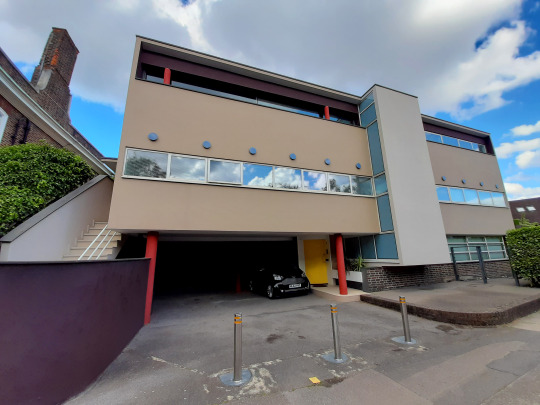
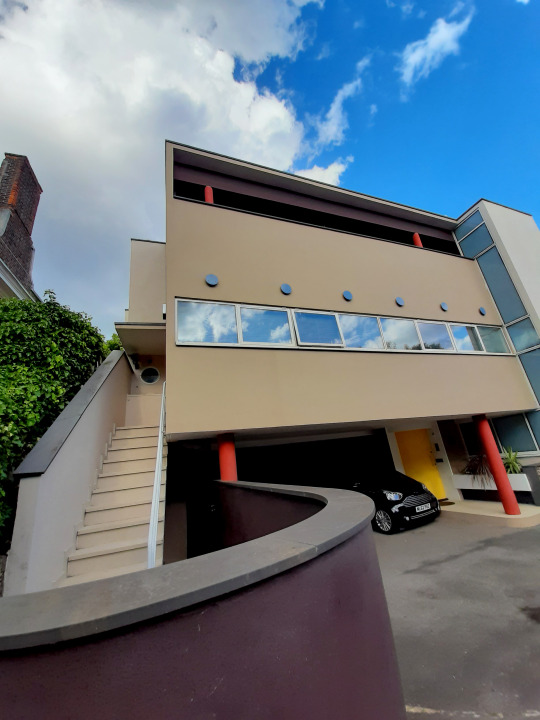




66 Frognal, Hampstead, London, NW3 [1938 & 2000] _ Architects: Connell, Ward and Lucas & Avanti Architects _ Photos by: Spyros Kaprinis [08.06.2022].
"This Grade II* listed house was designed by Colin Lucas of Connell, Ward and Lucas, and completed in 1938. The property had deteriorated significantly due to persistent lack of maintenance by a previous owner. Avanti Architects was commissioned by its new owner in 2000 to design and specify a full scheme of repair, upgrade and alteration works. The house had already undergone changes prior to listing, with addition of an integral swimming pool and in-filling of a roof terrace to provide a new master bedroom suite. These alterations were rebuilt with the approval of English Heritage in a manner sympathetic to the original design, and Listed Building Consent was granted. 66 Frognal is now a state-of-the-art 21st century home that can once again be recognised as an outstanding building of its period."
https://avantiarchitects.co.uk/project/66-frognal/
"The original design of 66 Frognal was heavily influenced by Le Corbusier and incorporates all of his Five Points of Modern Architecture. In short, it stands raised on pilotis, with a free plan and a free facade, ribbon windows and a roof terrace. The house is also constructed from reinforced concrete, with a western facade lacking in ornament, described by the agent as ‘an expanse of render and balanced fenestration interrupted by the protruding void of the internal staircase’."
https://www.wowhaus.co.uk/2019/02/12/1930s-connell-ward-lucas-designed-66-frognal-modernist-house-in-london-nw3/
#66 Frognal#Hampstead#London#NW3#1938#Connell Ward and Lucas#2000#Avanti Architects#English Heritage#Le Corbusier#Five Points of Modern Architecture#Pilotis#Free plan#Free facade#Ribbon windows#Roof terrace#Spyros Kaprinis#2022
5 notes
·
View notes
Note
Favorite groups in each genre (any studio)
Contemporary
Jazz
Musical theatre
Tap
Specialty / open
Of all time? That's way too hard, so I'll just do my favs from this season, gvfcdc
Contemporary:
Club - Toutes nos peurs, What happened to your heart & Once upon another time
Larkin - Marionette, One dove, Hold your own & Smile
Evoke - People
Pave - Sweet dreams & Love fool
AVANTI - People are strange
Mather - Troy
Danceology - Transcending dakrness, From ash, & Start at the end
Elements Dance Space - Youth
Beyond Belief Dance Company - The dance
Woodbury - My body is a cage & Prologue/Epilogue
OCPAA - Call my name, Snowing & Mi amor
CSPAS - How to be well
Yoko's - Metamorphosis
The Rock - Architect of the mind
Jazz:
P21 - Under pressure & River deep, mountain high
Danceplex - Strut
Pave - Work, Mother of the house, and Love fool
Club - Give him a great big kiss, I need a man & bang bang
Mather - Proud Mary & Alien superstar
Elements Dance Space - Dance with me
CSPAS - Rock this place & Disco fever
Yoko's - My girl
Expressenz - Sing sing sing
Larkin - Flashlights, Vogue, Flawless & Move it
Musical Theatre:
Club Dance - Munchkinland, Big dollhouse, Bring on the men, & Rollerskate rag
Danceology - Be our guest
Dance Precisions - Whaever Lola wants
OCPAA - Hideaway
Stars - See you next summer
CSPAS - Ex wives
Larkin - Thataway
Tap:
Larkin - Puttin on the ritz, Dancin' man & Dream on
Club - Tippy toes
Danceology - Speaking in taps
Expressenz - Blame it on boogie
Woodbury - Riptide
Speciality/Open:
Evoke - Different kind of human
Pave - Mambo #5 & Nails hair hips feels
Mather - A brief study on community & Temptation
Beyond Belief Dance Company - Queen's Party & Attack of the vultures
OCPAA - Boots are made for walking
The Rock - Cuba
1 note
·
View note
Text

Sulle alture di Bordighera e Sanremo si trova uno dei borghi più caratteristici e ricchi di storia di tutta la Liguria, si tratta di Seborga, la sua storia affonda le radici nel medioevo e da anni rivendica la sua indipendenza dichiarandosi Principato.
La prima traccia storica di Seborga si ha con un atto del 954 in cui il Conte di Ventimiglia cede il territorio di Seborga all’abazia che sorge sulle isole Lerino di fronte a Cannes in Costa Azzurra.
I monaci furono i Principi di Seborga fino al 1700 quando il territorio fu venduto all’allora Re di Sardegna Vittorio Amedeo II il quale acquistò Seborga come possedimento personale e non per annetterla al Regno di Sardegna.
Giorgio Carbone, appassionato di storia si accorse che gli atti di annessione di Seborga al Regno d’Italia prima e alla Repubblica Italiana dopo non erano legittimi e dagli anni ’60 portò avanti la causa dell’indipendenza del Principato di Seborga prendendo il nome di Giorgio I Principe di Seborga.
Ad oggi il Principato di Seborga continua la sua battaglia per venir riconosciuto grazie all’impegno della Principessa Nina, prima donna a ricoprire questo ruolo.
Edificata nel 1615 in chiaro stile Barocco è un piccolo gioiello di architettura ligure, fu infatti progettata dall’architetto Genovese Arturo Fieschi, sul sagrato antistante la chiesa, realizzato con piccole pietre e visibile la croce dell’ordine dei Cavalieri Templari.
Buongiorno e buon venerdì a tutti voi, cari amici, da Seborga!! 🇮🇹❤👏👋
On the heights of Bordighera and Sanremo there is one of the most characteristic villages rich in history in all of Liguria, it is Seborga, its history has its roots in the Middle Ages and for years it has claimed its independence by declaring itself a Principality.
The first historical trace of Seborga can be found in a deed dated 954 with which the Count of Ventimiglia ceded the territory of Seborga to the abbey which stands on the Lérins islands opposite Cannes on the French Riviera.
The monks were Princes of Seborga until 1700 when the territory was sold to the then King of Sardinia Vittorio Amedeo II who bought Seborga as a personal possession and not to annex it to the Kingdom of Sardinia.
Giorgio Carbone, a history buff, realized that the acts of annexation of Seborga first to the Kingdom of Italy and then to the Italian Republic were not legitimate and from the 1960s he carried on the cause of the independence of the Principality of Seborga taking the name of Giorgio Prince of Seborga.
To date, the Principality of Seborga continues its battle to be recognized thanks to the commitment of Princess Nina, the first woman to hold this role.
Built in 1615 in clear Baroque style, it is a small jewel of Ligurian architecture, it was in fact designed by the Genoese architect Arturo Fieschi, in the churchyard in front of the church, built with small stones and the cross of the order of the Knights Templar is visible.
Good morning and happy Friday to all of you, dear friends, from Seborga!! 🇮🇹❤👏👋
Grazie: Complimenti a📷@instagram.com/francescabologni 💚🤍❤️
0 notes
Text
For Love❣

»Sponsor»
►Deep Static ~ Josephine Glasses @ Cosmopolitan (September 4th ~ 18th)
~ Credits~
♥Body:
➟LeLUTKA Kaya & Maitreya
➟IVES - LeLU EvoX - Liv & VELOUR (chocolate) skin
➟LeLUTKA eyes
➟ S.E Reflect Mesh Buns Vers.01
➟.N X LeLUTKA EvoX Full Bloom Hairbase
♥Cosmetic:
➟[MJN] On My Throne lipgloss
➟Nuve. Dimples 100%
➟HERA - Play Dirty Cut EvoX.
➟+Psycho Barbie+ [Satan's Mark Bloody]
♥Outfit:
➟-[ vagrant ]- Monica Shirt - Red
➟EVIE - Cargo Pants
♥Accessories:
➟ .:Avanti:. Raemy Nails
➟MG - Amelia Starry Night necklace
➟*PKC* Gia Earrings
➟GRAAL STORE - Bad Company Grenade
➟EPITOME - Single Cigar
♥Back Ground:
➟ Architect. Javi Wall Panels (darks)
#cosmopolitan event#Deep Static#blogger#blog#fashion blog#SL Blogger#accessories#cosmetics#fashion#hair styles#poses#tattoos#shopping#events#travel#Maitreya#LeLutka#Avatar#Avi#Ava#Second Life#SL#virtual world#nail art
1 note
·
View note
Text
In the Vedic literature of India, there are many descriptions of flying machines called vimānas . These fall into two categories: (1) man-made craft that resemble airplanes and fly with the aid of birdlike wings, and (2) unstreamlined structures that fly in a mysterious manner and are generally not made by human beings.
The machines in category (1) are described mainly in medieval, secular Sanskrit works dealing with architecture, automata, military siege engines, and other mechanical contrivances. Those in category (2) are described in ancient works such as the Ṛg Veda, the Mahābhārata, the Rāmāyaṇa, and the Purāṇas, and they have many features reminiscent of UFOs...
In Sanskrit, a machine is called a yantra . The word yantra is defined in the Samarāṅgana-sūtradhāra of King Bhoja to be a device that “controls and directs, according to a plan, the motions of things that act each according to its own nature.” There are many varieties of yantras. A simple example would be the taila-yantra, a wheel that is pulled by oxen around a circular track to crush seeds and extract their oil. Other examples are military machines of the kind described in the Artha-śāstra of Kauṭilya, written in the 3rd century B.C. These include the sarvato-bhadra, a rotating wheel that hurls stones, the śara-yantra, an arrow-throwing machine, the udghāṭimā, a machine that demolishes walls using iron bars, and many more.
These machines are all quite understandable and believable, but there are other machines that seem less plausible from the point of view of modern historical thinking. Thus Raghavan mentions a device that could create a tempest to demoralize enemy ranks. Such a weapon is also mentioned by the third-century Roman writer Flavius Philostratus, who described sages in India who “do not fight an invader, but repel him with celestial artillery of thunder and lightning, for they are holy and saintly men.” Philostratus said that this kind of fire or wind weapon was used to repel an invasion of India by the Egyptian Hercules, and there is an apocryphal letter in which Alexander the Great tells his tutor Aristotle that he also encountered such weapons.
Modern scholars tend to regard Philostratus’s work as fictitious, but it does demonstrate that some people in Roman times were circulating stories about unusual fire or wind weapons in India. In ancient epics such as the Mahābhārata, there are many references to remarkable wind weapons such as the vāyavya-astra and fire weapons such as the śataghnī (or “100 killer”). In general, the weapons described in older works tend to be more powerful and remarkable than those described in more recent works. Some ascribe this to the fantastic imagination of ancient writers or their modern redactors. But it could also be explained by a progressive loss of knowledge as ancient Indian civilization became weakened by corruption and was repeatedly overrun by foreign invaders...
There are many stories in medieval Indian literature about flying machines. Thus in Bāṇa’s Harṣa-carita there is the story of a Yavana who manufactured an aerial machine that was used to kidnap a king. Likewise, Daṇḍī’s Avanti-sundarī tells of an architect named Māndhātā who used an aerial car for such casual purposes as traveling from a distance to see if his young son was hungry. His son, by the way, was said to have created mechanical men that fought a mock duel and an artificial cloud that produced heavy showers. Both of these works date from about the 7th century A.D
In the ninth to tenth centuries, Buddhasvāmin wrote a version of the Bṛhat-kathā, a massive collection of popular stories. Buddhasvāmin spoke of aerial vehicles asākāśa-yantras, or sky-machines, and he attributed them to the Yavanas—a name often used for barbaric foreigners. It was quite common for flying machines and yantras in general to be attributed to the Yavanas in Sanskrit texts. Some scholars take the Yavanas to be the Greeks, and they attribute Indian stories of machines to a Greek origin. For example, Penzer thought that the Greek philosopher Archytas (c. 428–347 B.C.) may have been the “first scientific inventor” of devices resembling the Indian yantras,and he pointed out that Archytas “constructed a kind of flying machine, consisting of a wooden figure balanced by a weight suspended from a pulley, and set in motion by hidden and enclosed air.”
Were the vimānas mentioned in Samarāṅgana-sūtradhāra ever actually built, or were they just products of imagination? I don’t know. However, the elaborate descriptions of yantras found in medieval Indian texts suggest that many sophisticated machines were made in India long ago. If sophisticated mechanical technology was known in remote times, then it is quite possible that airplanes of some kind were also built. It is interesting that the Sanskrit astronomical text entitled Sūrya-siddhānta mentions a mercury engine used to provide rotary motion for agola-yantra, a mechanical model of the planetary system. This suggests that at least one kind of mercury engine was used to produce rotary power. The text also says that the design for the mercury engine is to be kept secret.
-- Richard L. Thompson, Parallels: Ancient Insights into Modern UFO Phenomena
11 notes
·
View notes
Photo

Cacao Eco Village: Valentino Gareri Atelier @valentinogareriatelier designs a modular and sustainable village in #Ecuador made from 3d printed cacao waste Read more: Link in bio! @v.a.l.e.n.ti.n.o Atelier has designed for Ecuadorian chocolate manufacturer MUZE Cacao and nonprofit organization Avanti the first of a global network of sustainable and smart villages; a carbon-neutral destination and innovation center for circular economy in the cacao industry. #cacao #sustainable #архитектура www.amazingarchitecture.com ✔ A collection of the best contemporary architecture to inspire you. #design #architecture #amazingarchitecture #architect #arquitectura #luxury #realestate #life #cute #architettura #interiordesign #photooftheday #love #travel #construction #furniture #instagood #fashion #beautiful #archilovers #home #house #amazing #picoftheday #architecturephotography #معماری (at Pedernales, Manabi, Ecuador) https://www.instagram.com/p/CYuobR3Mosm/?utm_medium=tumblr
#ecuador#cacao#sustainable#архитектура#design#architecture#amazingarchitecture#architect#arquitectura#luxury#realestate#life#cute#architettura#interiordesign#photooftheday#love#travel#construction#furniture#instagood#fashion#beautiful#archilovers#home#house#amazing#picoftheday#architecturephotography#معماری
16 notes
·
View notes
Photo

Five shortlisted teams for Barbican Centre Renewal
The City of London Corporation has announced the five shortlisted teams for the Barbican Renewal project, the five teams will compete to renovate London's brutalist icon, a leading global arts and learning institution.
The selected shortlisted teams area:
Adjaye Associates, Benedetti Architects and PUP Architects alongside Charcoalblue, David Bonnett, DP9, Nigel Dunnett, OneDotZero, Peter Stewart, The Place Bureau, Transsolar, WSP.
Allies and Morrison and Asif Khan Studio alongside Alan Baxter Ltd, Buro Happold, Charcoalblue, Hood Design Studio, Isaac Julien Studio, les éclaireurs.
BIG – Bjarke Ingels Group, Avanti Architects, and POoR Collective alongside Applied, Atelier Ten, Barker Langham, Buro Happold, Charcoalblue, People Friendly Design, Speirs + Major.
Diller Scofidio + Renfro, McCloy + Muchemwa, and Purcell alongside Buro Happold, Charcoalblue, David Bonnett, GROSS. MAX., L’Observatoire, Nagata Acoustics, Nigel Dunnett, North Design, Patrick Burnham OBE, The Young Foundation, Transsolar.
FCBStudios (Feilden Clegg Bradley), Bureau de Change, Schulze+Grassov, and Thinc alongside AKT II, James Hitchmough, JWE, Max Fordham, Momentum, Nigel Dunnett, Ramboll.
read worldarchitecture.org article >
Image © Max Colson Courtesy of Barbican Centre
5 notes
·
View notes
Photo

#williamkristel #architect #studebaker #avanti #vintage #car #palmsprings #modernism #midcenturymodern #californianmodernism #midcentury #modern #thespacesilike #architecture #palmspringsmodernism #desertmodernism #desertmodernismarchitecture (v místě Palm Springs, California) https://www.instagram.com/p/BsUi0AClFZ_/?utm_source=ig_tumblr_share&igshid=1p3ng1f70drh6
#williamkristel#architect#studebaker#avanti#vintage#car#palmsprings#modernism#midcenturymodern#californianmodernism#midcentury#modern#thespacesilike#architecture#palmspringsmodernism#desertmodernism#desertmodernismarchitecture
0 notes
Photo
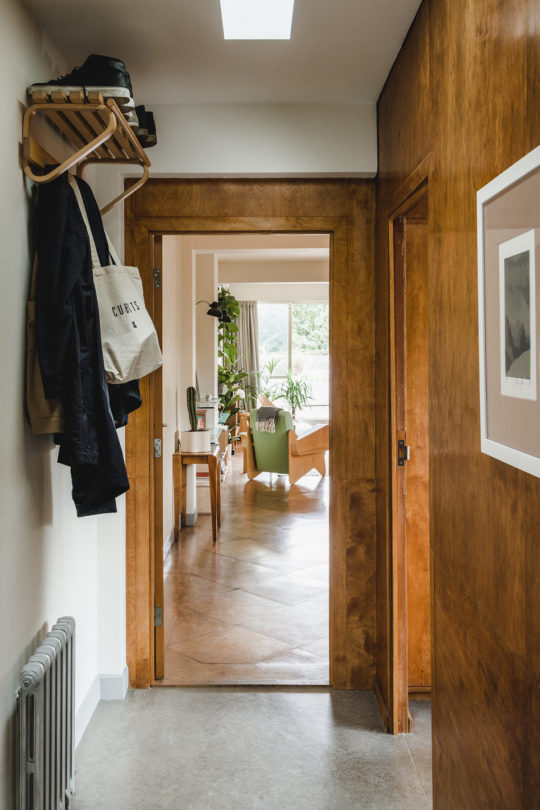


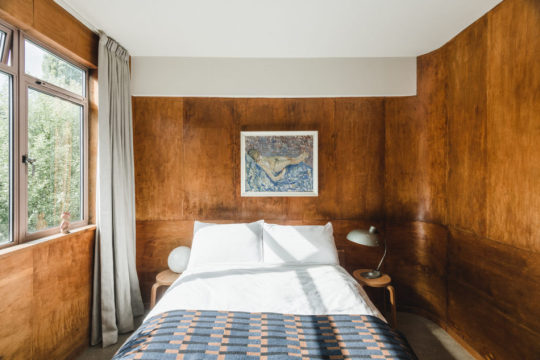

Wells Coates, Lawn Road Flats (or) Isokon Flats
21 Lawn Road, NW3 London, United Kingdom, 1933-34
The Isokon building in Lawn Road, Hampstead, London is a concrete block of 34 flats designed by architect Wells Coates for Molly and Jack Pritchard. They were built between 1933 and 1934 as an experiment in communal living. Most of the flats had very small kitchens as there was a large communal kitchen for the preparation of meals, connected to the residential floors via a dumb waiter. Services, including laundry and shoe-shining, were provided on site.
Early famous residents included Walter Gropius, Marcel Breuer, Agatha Christie (1940-46), László Moholy-Nagy, Adrian Stokes, Egon Riss and Arthur Korn. Jack and Molly Pritchard lived in the penthouse. The communal kitchen was converted into the Isobar restaurant in 1937. James Stirling was a resident during the 1960s.
The Isokon company folded during World War II. In 1969 the Isobar was converted into flats and in 1972 the building was sold to Camden Council, and gradually deteriorated until the 1990's when it was abandoned and lay derelict for several years. In 2003, the building was sympathetically refurbished by Avanti Architects, a practice which specialise in the refurbishment of Modernist buildings, for Notting Hill Housing Association and is now primarily occupied by key workers under a co-ownership scheme. The refurbishment has also created a public gallery displaying reproductions of the original interiors.
The block has been granted Grade I listed status, placing it amongst the most architecturally-significant historical buildings in the UK.
#wells coates#lawn buildong#lawn road#flat#flats#isokon#architecture#uk#england#gropius#breuer#Agatha christie#stirling#timber#wood#house#interior#modern#mid century#london
26 notes
·
View notes
Photo

What’s on
Talk
Modernising Britain
26 November 2019, 7–8.30pm
Royal Institute of British Architects
66 Portland Place
London W1B 1AD
The ‘Beyond Bauhaus’ exhibition, which looks at how the Bauhaus movement influenced British modernist architecture, opened last month at the RIBA in London and is open until 1 February.
Many of the country’s most important pre-war and post-war Modernist buildings have undergone restoration in recent years. On the 26 November to coincide with the exhibition, the RIBA are holding an event bringing together five leading architects speaking about their approach to restoring, refurbishing and conserving Britain’s modernist buildings.
Speakers include Sam Causer of Studio Sam Causer on Kensal House, Christophe Egret of Studio Egret West on the refurbishment of the Balfron Tower and Fiona Lamb of Avanti Architects on the regeneration of the Isokon Flats.
Tickets are £12 or £6 for RIBA members and available via Eventbrite here.
—
Image: Kensal Rise
10 notes
·
View notes
Text
RAHEJA GROUP - PROVIDING PREMIUM QUALITY PLOTS IN RAIPUR -
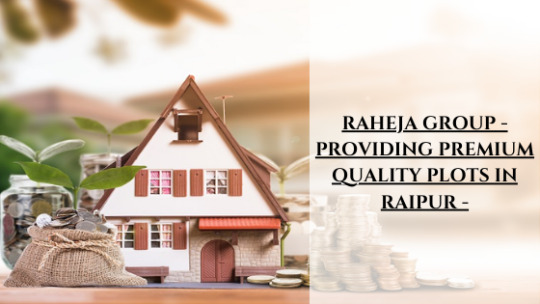
Success in real estate starts when you believe you are worthy of it - Michael Ferrara.
Buying a plot is more than a marketing trick the key to long- and short-term financial success.
Purchasing a plot is an investment you'll be happy you made!
A plot is like a blank canvas on which you can paint whatever you want. Purchasing a block of land is a sound financial investment that will grow in value over time.
Plus, you get to decide how and where you want to create your dream home. You have the option of having nature surround it.
Why you should invest in plots in Raipur -
Get Excellent returns -
The price of real estate will continue to go up as the need for land as a resource grows.
Furthermore, purchasing a plot in a hotspot location will improve your revenues. Plus it's a fantastic chance that most shareholders would not pass up, given its long-term track record.
Start building your home, When you're ready -
Real estate investment can be highly costly. Buying a plot of land is far less expensive than getting an apartment. Even so, it might put a significant dent in your bank account. As a result, you can purchase plots now and construct your home afterward. It effectively gives you the ability to construct your home anytime you choose.
Create a home that meets your requirements -
You will be able to create your ideal home precisely how you want it if you purchase a plot.
The vision of a builder or architect will no longer be your reality if you choose this choice. You can plan and design every part of your home with the help of architects and interior designers.
Is the location of a plot significant when purchasing one?
Purchasing a plot of land and making an investment in it can be viewed as the realization of one's goal of leaving a legacy for future generations. A plot provides us with a beautiful holiday home for the entire family in addition to being an important asset that adds to our money. Raipur is steadily developing into a trade and commerce powerhouse, continually stretching the city's boundaries and redefining the suburbs.
Accessibility is simple:
Purchasing a plot is done to create a financial asset. However, investing in land necessitates careful consideration of several issues that may have an impact on the value of your property. Accessibility is one of these factors.
True, the majority of planning projects are located on the outskirts of major cities, where land is readily accessible at low prices.
Infrastructure:
The place in which you decide to invest should have all of the necessary infrastructures for a modern lifestyle.
Water and power must be available at all times, as we cannot picture life without them.Network, as well as the presence of schools and colleges, are further requirements for good infrastructure.
Regions of trade:
Because this is where a person wants to live, the place chosen must be in a significant commercial or business hub. There must be work prospects to anticipate. The plot's worth rises as a result of its closeness to business or commercial zones, which expands the plot's potential for expansion and development.
How Raheja group makes it easier for you to invest in plots in Raipur -
Raheja Group is one of the best real estate companies in Chhattisgarh and a multi-disciplinary vibrant organization committed to satisfying customers through quality innovation and creativity. Real estate investor's income depends on the kind of property they invest in. The benefits of investing in real estate include passive income and leverage.
What we own -
We consider our customers as our family members, who have shown faith in our organization. Due to their continuous trust, we have become the symbol of success and entrepreneurship. We establish ourselves as a world-class project and promise to maintain the same precision delivered in the past.
Raheja Residency - St. Xaviers High School, Avanti Vihar, Raipur (C.G.)(C.G.
Raheja Arth - Professor Colony, Sai Vihar, Labhandi, Raipur(C.G.)
Raheja Towers - Jail Road, Near Hotel Celebration Raipur (C.G.)
Raheja SkyScapes -Behind Ambuja Mall, Saddu Raipur (C.G.)
Raheja Greens - Near Ring Road no 3, Pirda, Raipur(C.G.)
Raheja Homes - Daldal Seoni, Raipur, (C.G.)
Raheja Nirwana - Raheja Nirwana, Kachna Road, Raipur
The land is in such little supply, that it is always viewed as a valuable asset. To attain their financial goals, many people invest in real estate in various ways such as plots, individual houses, commercial complexes, flats, and so on.
Apartments, single-family homes, and other high-value investments may not be ideal for first-time investors. Such investors typically purchase smaller plots to sell them at a later date when the value of the property has increased or when they require funds to fulfill their objectives.
0 notes
Text

In which English city is Lime Street a major railway terminus?
Lime Street is a railway terminus station in the city centre of Liverpool. It opened in August 1836 and is now the oldest operating grand terminus mainline station in the world. The station was originally served by the Liverpool and Manchester Railway but is now a terminus of the London, Midland and Scottish Railway. It is also used by the East Midlands Railway, the TransPennine Express, the London Northwestern Railway, Northern Trains, Avanti West Coast and Transport for Wales.
Liverpool Lime Street is divided into two sections: a mainline station and an underground station. The latter opened in 1977.
The station was originally designed by the architects Arthur Holme, John Cunningham, and John Foster. The building was remodelled several times, with major improvements made for the millennium (2000).
Liverpool is a city in the northwest of England. It is the fifth-largest metropolitan area in the UK. As well as a mainline railway station, Liverpool has an airport known as the John Lennon Airport after a member of the band The Beatles who lived in the area.
0 notes
Text
Milano, nuovo Consolato USA all'ex Tiro a segno: sarà un edificio a 0 impatto ambientale

Milano, “La notizia dell’affidamento dei lavori per il nuovo Consolato americano a Milano ci rende particolarmente felici, dopo un percorso durato molti anni in cui la Direzione Urbanistica del Comune di Milano ha collaborato fattivamente affinché si realizzassero tutti i passaggi necessari, dal rilascio dei necessari permessi, alla realizzazione della bonifica, fino alla tutela dell’edificio storico. Quello che sarà realizzato nell’ex area del Demanio statale del Tiro a segno sarà un edificio con certificazione LEED, ovvero ad alti standard di risparmio energetico e qualità ecologica, nel pieno rispetto delle politiche ambientali che questa Amministrazione comunale sta portando avanti per ridurre al minimo l’impatto delle nuove operazioni urbanistiche”.
Così l’assessore alla Rigenerazione urbana Giancarlo Tancredi commenta la notizia ufficializzata dal Dipartimento di Stato americano sull’affidamento del progetto del nuovo consolato a Milano, gestito da Overseas Buildings Operations (OBO), alla Caddell Construction Company LCC di Montgomery, Alabama. Lo studio di architettura è SHoP Architects di New York.
Il progetto prevede, oltre alla nuova sede del Consolato, il restauro dello storico Palazzo Liberty nella sede del Consolato.
Read the full article
0 notes
Text
[*PDF/Kindle]-> Read/Download The Barbican Estate BY Stef Orazi full ebook
Read and download book The Barbican Estate in PDF, EPub, Mobi, Kindle online. Free book The Barbican Estate by Stef Orazi.
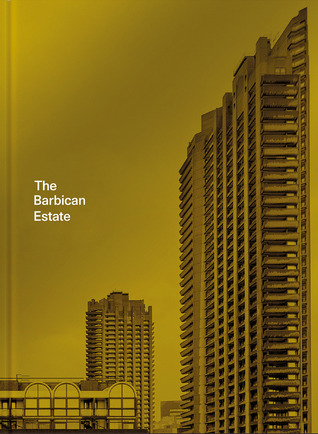
√PDF | √KINDLE | √EPUB
⇓⇓⇓
Read/Download => https://bryandcvg-a88030.blogspot.com/?book=1849944571
Descriptions :
Read and Download Stef Orazi book The Barbican Estate.With stunning images, expert commentary from world-famous architects, and interviews with residents, The Barbican Estate pays tribute to one of London?s most iconic structures on its 50th birthday. This beautifully illustrated and comprehensive book celebrates London?s Barbican Estate as it nears its 50th anniversary in 2019. Author and designer Stefi Orazi examines both the function of this landmark and its status as a world-famous Brutalist icon, interviewing residents past and present to provide insight into how life there has changed over the decades. Leading architects and design critics weigh in, including John Allan of Avanti Architects on the unique building materials and Charles Holland of Charles Holland Architects on the Barbican as a home and how these concrete towers have become such an integral part of Britain?s architectural history. For each of the 140 different flat types, there are drawings, maps, and details of the fixtures and fittings. .
The Barbican Estate by Stef Orazi
Tags: The Barbican Estate by Stef Orazi Free download, PDF, epub, docs, New York Times, ppt, audio books, Bloomberg, #NYT, books to read, good books to read, cheap books, good books,online books, books online, book reviews, read books online, books to read online, online library, greatbooks to read, best books to read, top books to read The Barbican Estate BY Stef Orazi books to read online.Reading Download Pdf Epub read
0 notes